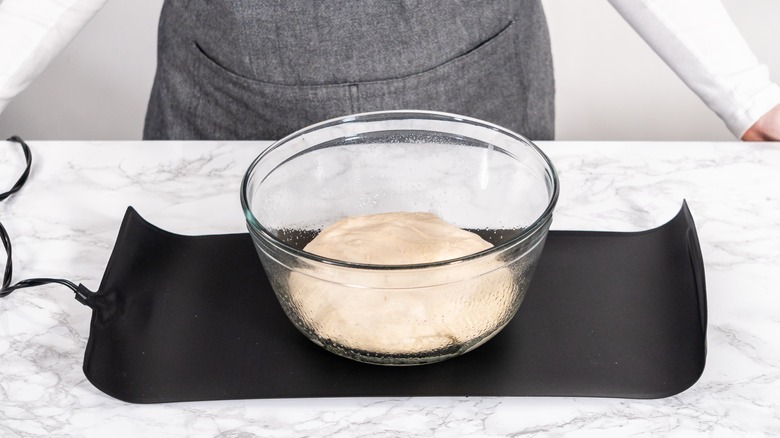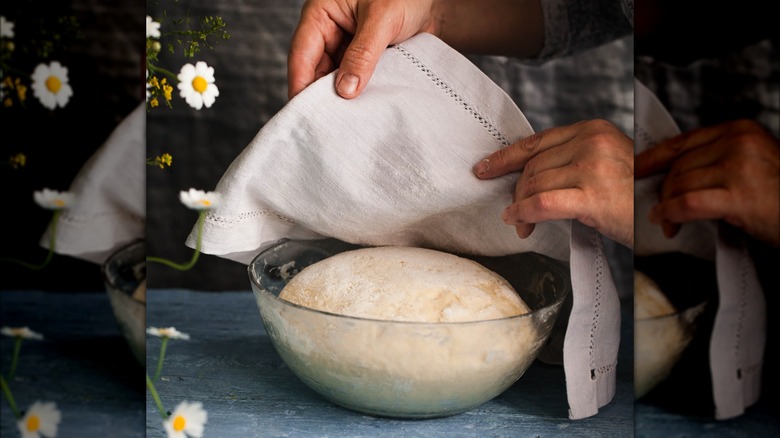The Non-Kitchen Tool Alton Brown Uses To Raise Bread Dough
Alton Brown is no stranger to unconventional practices in the kitchen. The author and chef mixes mayonnaise into scrambled eggs for super creamy results, he bakes meatballs in a cardboard egg carton, and he cooks up Cornish hens in a panini press, to name a few of his zany (but genius) ideas. He also has some strong feelings about speeding up the process of bread dough rising, which is about as exciting as watching paint dry. To create the toasty environment dough thrives in, he uses a heating pad.
The ideal environment for dough to rise in is between 80 and 90 degrees Fahrenheit with no drafts. This is easier to obtain in the warm months when you can simply cover your dough and leave it on the kitchen counter, but when it's chilly, it can take some creativity to find a warm spot in which your dough will cooperate. By placing his bowl of dough on a heating pad, Brown can rise his dough any time of year with ease.
Bring the heat
Alton Brown isn't the only one who advocates for this unusual technique. Plenty of other home bakers agree that using a heating pad will speed up the process of dough rising, particularly when weather conditions aren't in their favor. You'll want to cover the dough in your bowl with a sheet of plastic wrap to keep the air surrounding the dough nice and humid. Place a kitchen towel between the heating pad and the bowl and turn the pad onto the lowest possible setting which is typically anywhere from 100 to 110 degrees Fahrenheit. At 120 degrees, yeast begins to die, so make sure your pad doesn't get too hot.
Using a heating pad will likely cause your dough to rise faster than it would if it was sitting at room temperature so you'll also want to ensure it doesn't rise too much, which could cause the dough to collapse. The rule of thumb is that a dough is fully risen when it has expanded to about double its original size. Another test suggests that when you poke a properly risen dough with your finger, the indentation should stay and the dough should very slowly rise back up. If it immediately springs back, it's not done rising yet.
Rise to the occasion
It should come as no surprise that Alton Brown also uses a heating pad to incubate his homemade yogurt. He notoriously despises single-use kitchen gadgets so why should he feel any other way about portable pain relievers? Of course, if you don't have a heating pad, there are other ways you can get your dough to rise when your kitchen isn't as warm as you'd like it when making bread.
Check to see if your oven has a proofing setting — many do and people don't even realize it. A popular microwave hack is also very useful for this task; simply heat a mug of water in your microwave until it boils. Leave the mug in and place your bowl of dough inside with the door shut. The chamber will make for a warm and humid environment that bread yeast will love. You can also place the covered dough under a table lamp to create a toasty place for your dough to rise. Avoid placing the dough directly onto a granite countertop because the stone dissipates heat quickly, and will turn your loaf ice cold.



